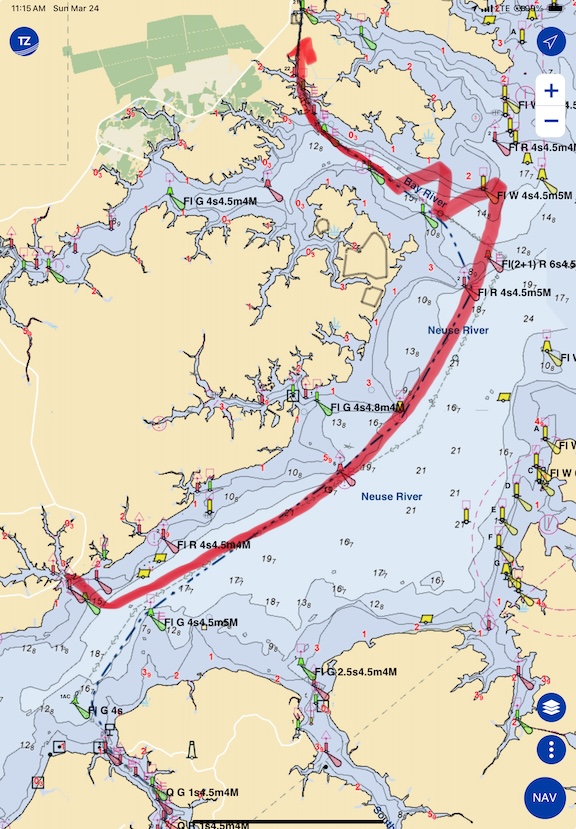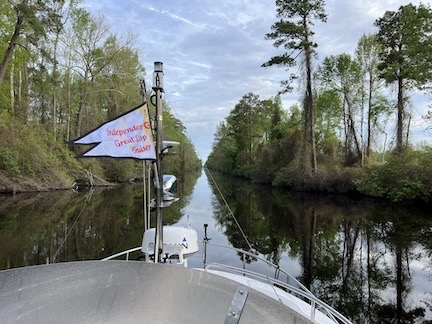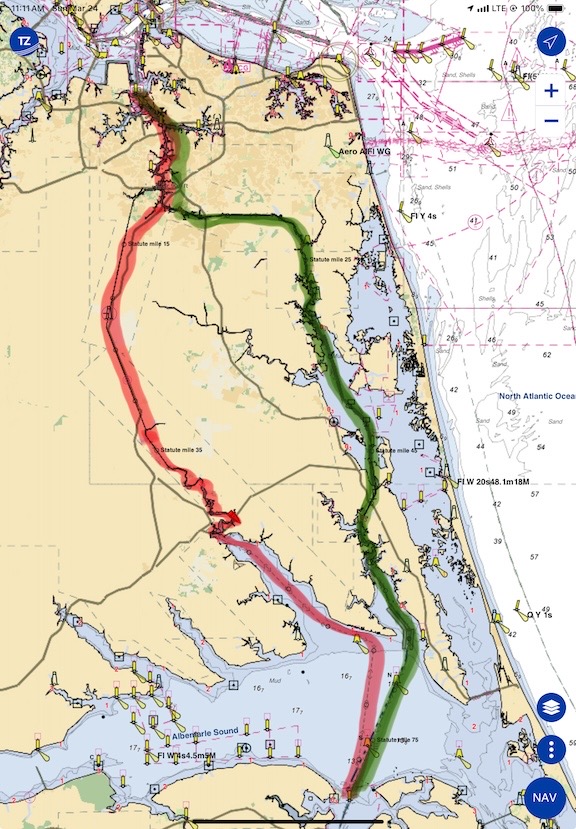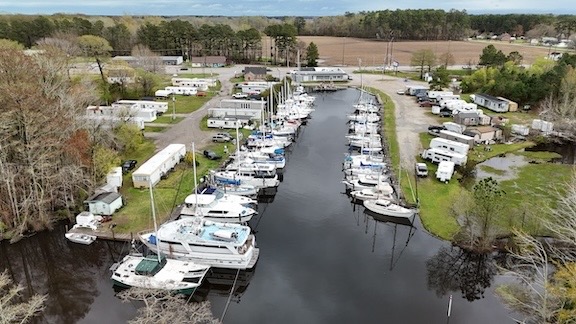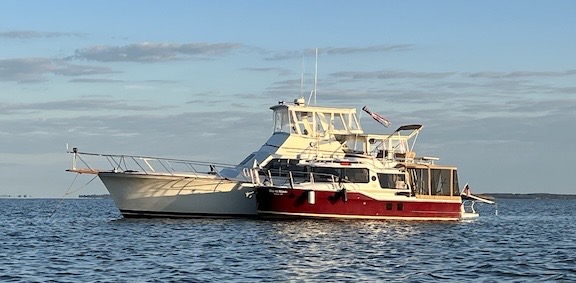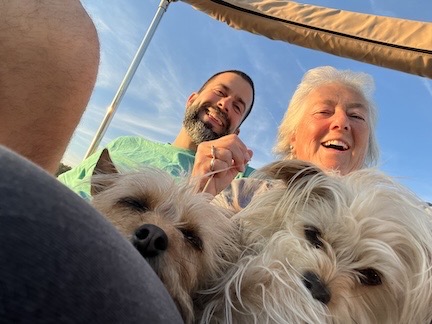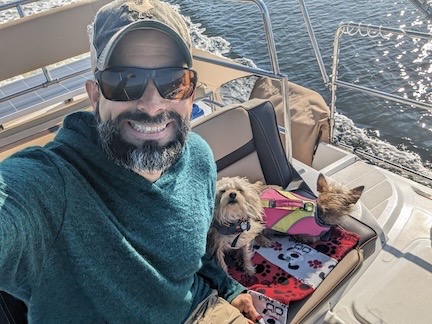I come up with a new goal and a business plan to go with it — and realize that this simply isn’t a good time to take risks.
If you’ve been following this blog for a while, you should know a little about me, but if you don’t, let me fill you in on what’s important to know for this post.
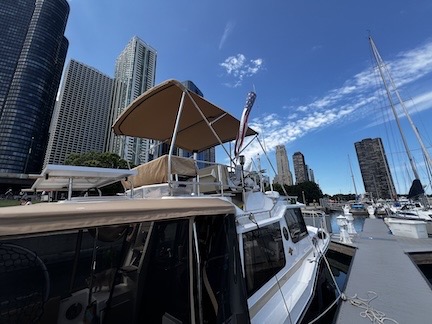
I crossed my wake in Chicago on August 12, 2024. Here’s my boat, Do It Now, in a slip at DuSable Marina in Chicago, exactly 6 feet away from the slip I started from in October 2022.
I’m currently 60-something. I retired from my most recent career as a helicopter pilot in 2023, after selling the helicopter, the charter company, and the cherry drying company in 2022 and 2023. I took the proceeds from those sales and used them to buy a 32-foot “pocket yacht,” which I shipped to Chicago in October 2022. I then spent most of the next two years cruising on that boat, alone and with friends, along the Great Loop. (I blog about that in my Great Loop blog, so if you’re interested, please check it out.)

The bigger your garage is, the more stuff you’ll accumulate to fill it.
I finished my Great Loop trip in August 2024 and trailered the boat back to the Seattle area, where I launched it in Puget sound. I then spent most of the next month cruising around there and the Inside Passage before bringing it home and cramming it into my very large garage for the winter.
In those final days on the Loop — keeping in mind that I covered more than 8,000 miles — I realized that the part of the Loop I liked the best was the northern part, say from New York City all the way up to Canada and then west into the Great Lakes. There’s nothing quite like cruising in the lakes, rivers, and canals of New York and Ontario; I felt that I could do it forever.
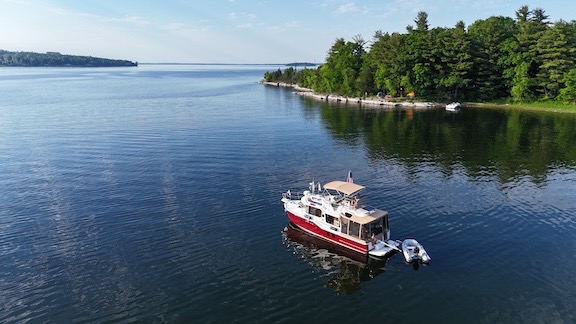
Here’s Do It Now anchored off Valcour Island in Lake Champlain in June 2024. I could spend a lifetime exploring the waterways of New York and Ontario.
Wouldn’t it be great to do it every summer until my age caught up with me and I was done boating?
Goals
I’m a person of personal goals and finishing the Great Loop left me kind of floundering without one. I also felt weird about being retired — not having anything to do to bring in a few bucks to cover my living expenses. I was living off my retirement savings, waiting a few more years to start collecting social security, and it didn’t look as if running out of money was going to be a problem. (I’m remarkably thrifty about some things.) Although my side gig as a silversmith did bring in some money, it was small change without the potential to get much bigger — unless I was willing to spend five days a week in my studio producing jewelry and a bunch of time finding new markets for my work. I wasn’t.
But when I finished the Loop I felt the inklings of a new goal coming on, a new business endeavor where I could spend eight months of the year cruising northern inland waters and the remaining four months soaking up the sun in Arizona. I’d use my captain’s license to offer one- and two-week cruises to a specific potential market of people, cruising in the waters I wanted to explore while teaching them what I knew about cruising. The money I brought in would cover my cruising expenses, reducing my cost of living and helping me preserve some of those retirement savings.
I’m Going to Need a Bigger Boat
But there was a catch: I needed a bigger boat.
I needed a boat with two full sleeping cabins. My guests would get the good one and I’d take the lesser one, but the lesser one had to be a lot bigger than the lesser one on my current boat. I needed to upsize and I had a few models in mind.
Of course, all of these bigger boat options, although pre-owned, would cost a significant amount of money. I figured I’d get that money by selling my home, which is fully paid for, and my current boat, which has a small loan. (I could go into a long lecture about having a paid-for home, but I won’t do it here.) I figured I’d put all of the boat proceeds and half the home proceeds into a bigger boat and use the rest of my home proceeds to buy a modest place in Tucson. After all, although I love my current home, I don’t like it nearly as much during the four months I’d be taking my annual break from the boat. Surely I wouldn’t miss it.
When I was in Arizona, I looked at homes and land and actually found two different lots that were perfect for me. One would be easier than the other to build on, but I’d still have to build on it. I built my current home, acting as General Contractor while the experts did the stuff requiring experts and I did the rest. Did I have another build in me? I thought maybe I did.
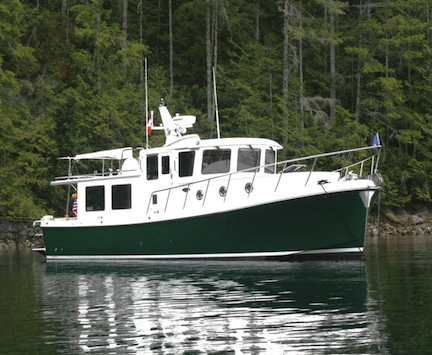
What a deal! This 2014 American Tug could be mine for just $610K! Not what I was hoping to spend, however.
So all this is what was going through my mind when I cut this winter’s trip to Arizona short so I could attend the Seattle Boat Show. I had multiple goals for the show, but the main one was to look at used boats in the marina portion of the show. And I did. I actually found two models that would work perfectly for my new business.
The unfortunate thing was that they cost about 50% more than I was hoping to pay. Oops.
Okay, well maybe I could get a small business loan. I had good credit and could work up a business plan that would pass muster. My number-smart brain — did I mention I have an accounting degree? — went to work considering possibilities to make this happen.
How the Current Political Climate Stopped Me Cold
Meanwhile, the demented old narcissist that half the country thought should be the most powerful man in the world got sworn into office. (Did you notice how he didn’t touch the bible? I think he was afraid he’d burn his hand with the lightning God would send through it.)
And things got pretty weird pretty quick.
I won’t go into a litany of the weird shit the Orange Clown and his South African crony, the Space Karen, have subjected America and the world to. First of all, I couldn’t list it all. I stopped following the news. All I know are the things that have crept through my social media filters, things I’ve heard while I had my head in the sand and my fingers in my ears singing la, la, la, la, la at the top of my lungs.
And even that is enough.
More than enough.
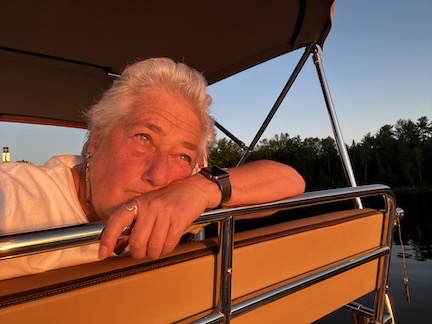
There will be no return to Valcour Island in a boat anytime soon. But I will get to cruise the Pacific Northwest this summer so I’m not as sad as this picture might make me look.
More than enough to tell me that I’d be insane to invest time and money in a new business in this crazy political climate. Tariffs will result in inflation far beyond what we saw over the past few years. Job losses from the shutdown of government offices and the cancelling of grants will put people in dire straits. Another recession, which is definitely possible when the guy making laws by signing executive orders keeps making asinine decisions, will make it highly unlikely that anyone will want to pay me to take them on a cruise. (Unless there’s a chance I can smuggle them into Canada, I guess. If Canada even lets us in.)
More than enough to tell me that I’d be a complete and utter fool to walk away from a paid-for house to build a new one in the kind of economic uncertainty we face, where the price of lumber and building materials could jump 50% — if such materials were available at all. And in a red state? A place where the majority of people think calling the Gulf of Mexico the Gulf of America is a good thing that proves their cult leader has their best interests at heart? (How are those egg prices doing, my deplorable friends?) And how long before they cut our social security and medicare benefits — the exact thing most Americans in my age group are relying on to take care of them in their old age?
Am I nuts?
No.
So there won’t be a new business in my future. (Well, at least not one beyond the tiny business I started late last year and will talk about elsewhere.) There won’t be cruising in the freshwater lakes, rivers, and canals of New York and Ontario and beyond, at least not in a new-to-me, bigger boat. There won’t be a new house on five acres of desert land in the foothills of the Rincon Mountains near Tucson.
There will just be the financial security and comfort of the home I’m in now, a home I love eight months out of the year. I’ll keep myself busy enough.
And learn to be satisfied without chasing down another goal.
I still have that camper for a winter escape.









